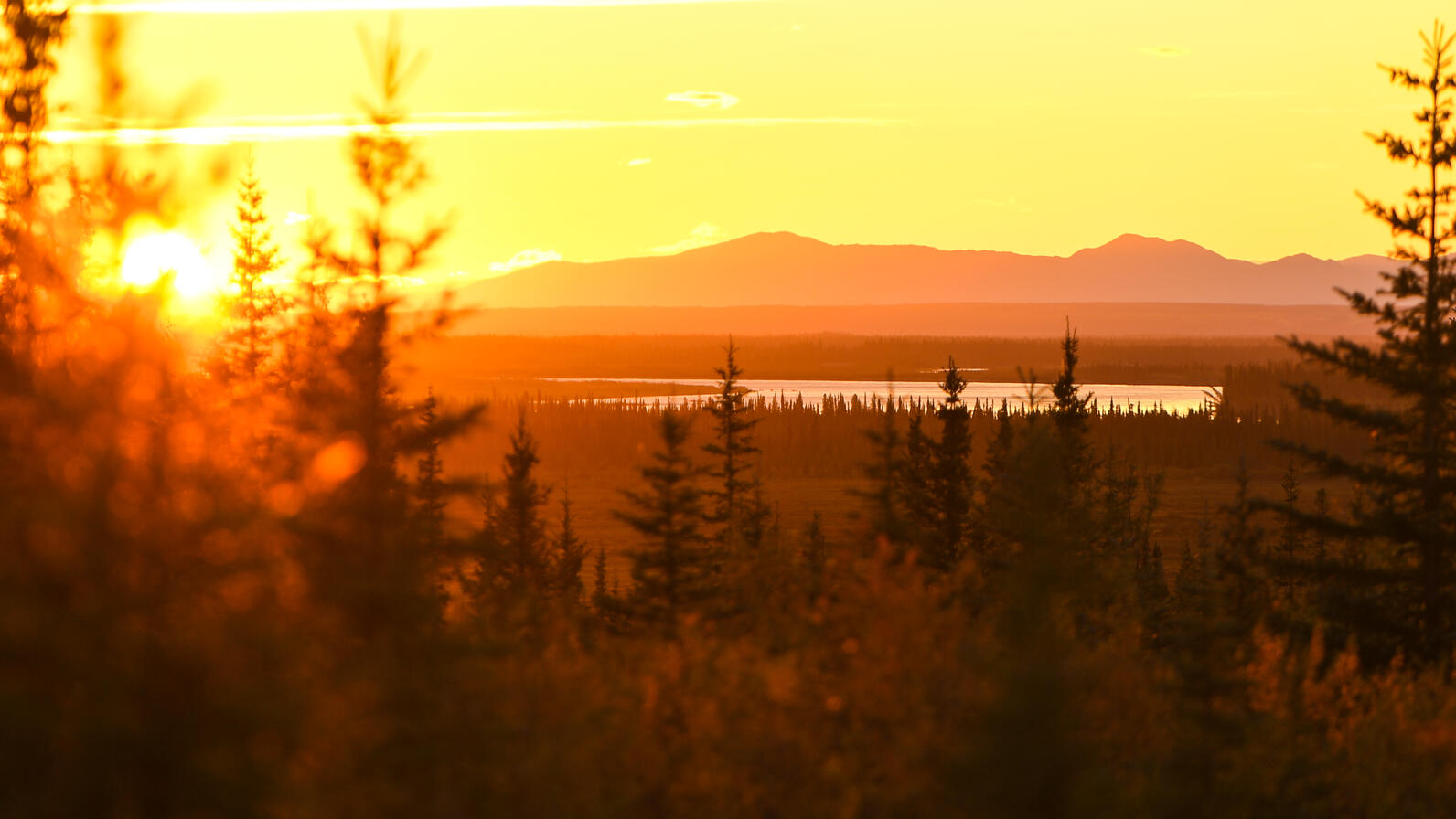
If you have written a public comment on the proposed Ambler Road, answered one of our action alerts to protect the Arctic Refuge Coastal Plain, or testified at a local community hearing on the importance of roadless areas on the Tongass, you have participated in the public process granted to all of us under the National Environmental Policy Act (NEPA). Often called the first major environmental law in the U.S., NEPA’s passage in 1970 gave the public a formal process to weigh in on proposed federal activities on public lands. NEPA also provides a mechanism for federal agencies to undertake reviews of possible impacts for projects proposed on federal lands.
In 2020, the Trump administration took action to weaken NEPA by attacking the provisions for public process and stakeholder engagement, limiting the federal agencies’ requirements for NEPA reviews, and removing the requirement that NEPA analyses should include the analyses of indirect or cumulative impacts. Today, the Council on Environmental Quality (CEQ), the agency formed to oversee federal agencies’ implementation of NEPA, released the first of a two-phase approach to reinstate the important components of NEPA that were stripped by the previous administration. Here, we outline the three provisions that will be reinstated in this first phase, and how they impact active conservation issues in Alaska.
1).Eliminate the 2020 change to NEPA that would have required agencies to address the purpose and need for federal review based on a permit applicant’s goals. Instead of restricting the number of alternatives an agency can consider to the desires of a permit applicant, the new regulations proposed would enhance the agency’s ability to consider a breadth of alternatives, including those that minimize impacts to public health, environmental degradation, or disproportionately impact specific communities. This means that oil and gas leasing activities on the North Slope of Alaska could undergo a more detailed review of the impacts of air quality on local communities and the agency could suggest an alternative to development that minimizes impacts to air quality.
2).Restore the requirement that federal agencies consider the indirect and cumulative effects of a proposed action. Without these requirements, it would have been possible for a timber sale on the Tongass National Forest to move forward without taking into consideration how the addition of several miles of new road will compound issues for wildlife on already existing road networks, further fragmenting habitat. In the western Arctic/NPR-A, considering cumulative impacts means that a permitee for oil and gas leasing has to consider how the addition of gravel roads to access a new drilling site will impact caribou habitat that is already fragmented by existing road infrastructure. This requirement for indirect and cumulative impacts extends into our future renewable energy projects on federal public lands. We will need to consider how the addition of infrastructure for renewable energy (solar, wind) impact fish and wildlife populations that have already been impacted by a history and legacy of oil and gas development. Cumulative impacts analyses also give agencies the ability to analyze impacts for climate change costs—either carbon emissions, changes to air quality, or the detriment to human health exacerbated over time and space.
3). Re-establish CEQ’s NEPA regulations as the minimum, not maximum, of what is possible for environmental review standards. The CEQ’s NEPA guidance is national in scope, and applies to all federal agencies that undertake NEPA processes. Therefore, the regulations are broad. The new proposed guidelines would re-instate federal agencies’ discretion to impose more protective standards for environmental review and proposed alternatives. For example, forests in Alaska regenerate at a much slower rate than forests in other parts of the U.S. Peatlands in the boreal regions of Alaska, once disturbed, may become sources of carbon emissions instead of one of our nation’s largest carbon sinks. Therefore, federal agencies in Alaska may want to impose more environmental protections on intact habitats in Alaska because they are not as modified as landscapes in other parts of the country. And, Alaska’s intact lands and waters are now seen as a globally significant natural climate solutions. New NEPA regulations could allow agencies more discretion to protect important places by offering alternatives that reflect the importance of minimizing impacts in favor of mitigating climate change. From the proposed Ambler Road, to the expansion of the Rock Creek Mine in Nome, these new NEPA regulations could initiate new public processes.
NEPA is the bedrock of our work to protect important places for birds and people. It is a law for the people, giving us the ability to comment, protest, and protect in the name of equity and access to clean water, clean air, and wild spaces for all people of the United States. NEPA is our tool for government accountability, for tribal consultation, for stakeholder engagement. It will be even more important as we grapple with the land management challenges in front of us. Developing critical mineral resources to power renewable energy infrastructure, building roads for access to solar arrays and wind farms, sighting micro hydro to power rural communities—these are all actions that come at a cost to our lands, waters, and wildlife. We need to have the best available information, and space for dialogue, so we can make informed decisions about our uncertain future, together.
The Council on Environmental Quality is accepting public comments until November 22, 2021. Follow us for more opportunities to engage on this proposed rulemaking!




